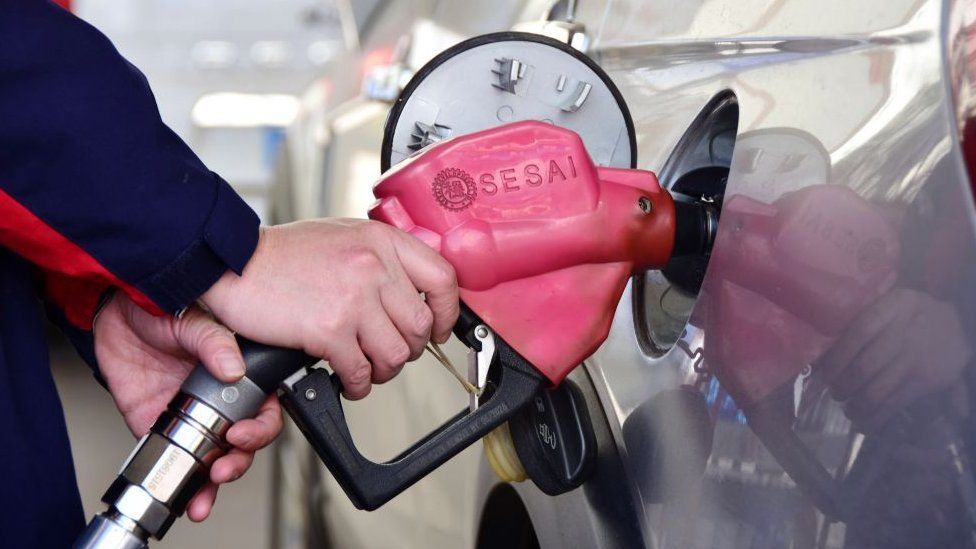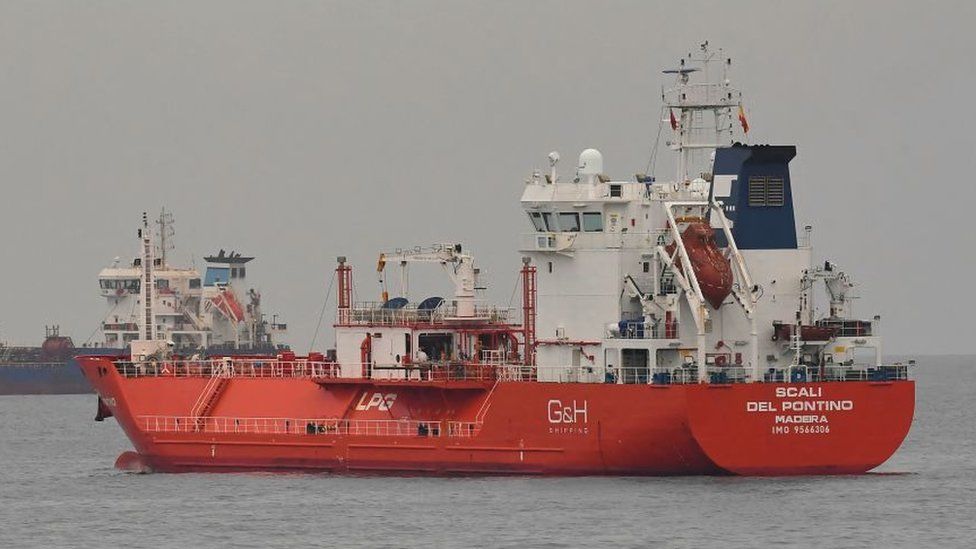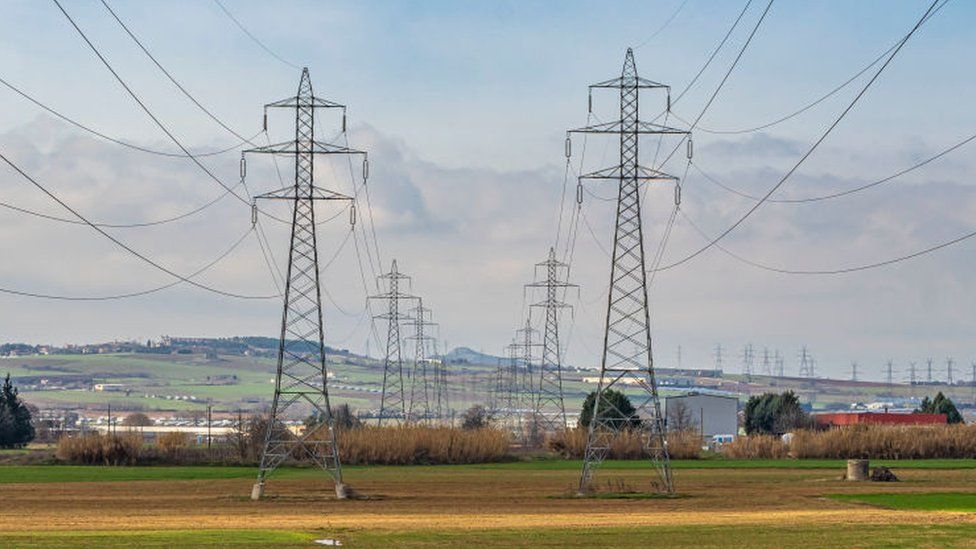

Developed societies need copious quantities of energy to power our factories, to grow and preserve food, to allow people and goods to move around, and to warm or cool our homes.
If prices get too high, the cost of living rises. This was something that became only too apparent two years ago, when the combined effects of economies regaining momentum following the coronavirus pandemic, and Russia’s invasion of Ukraine, sent energy costs soaring.
That helped produce a wave of inflation around the world, which in turn led central banks to push up interest rates – leading to much higher borrowing costs for businesses and individuals. Only now are we feeling the effects of that inflationary shock subside.
In the UK, where consumer prices for electricity and gas are capped, household bills are now at their lowest level in two years – but still high by historical standards.
On the flipside, if energy is too cheap, it removes the incentive to invest in more efficient and environmentally friendly technologies – and can lead to higher emissions.
So where will prices go over the next 12 months?
Back in 2022, the price of Brent crude oil – one of the major global benchmarks – peaked at $139 a barrel, and averaged roughly $100. Last year was much calmer, with a peak of $98, and an average of $83.
That was despite factors such as the decision by the influential OPEC+ group of producer countries to extend, and in some cases expand, cuts in their output in an effort to support prices. In addition there were growing tensions in the Middle East as a result of the conflict between Israel and Hamas.

Over the next 12 months, demand for oil is expected to increase by around 1.1 million barrels per day, according to a report from analysts at the industry news service Energy Intelligence. However, they believe extra production from outside OPEC+ will be able to meet that demand.
That suggests prices should remain relatively stable. However, the International Energy Agency (IEA) has warned that “rising geopolitical tensions in the Middle East, which accounts for one third of the world’s seaborne oil trade, has markets on edge”.
“If nothing goes wrong, we’re looking at a balanced market, with prices hovering around $80 a barrel. But that’s a big if,” says Jorge Léon, senior vice president at research firm Rystad Energy.
“So let’s say there’s an escalation in the Middle East. The main question to me is – what does Saudi Arabia do?”
Saudi Arabia is the world’s biggest oil exporter, and it has the capacity to produce an extra 3.2 million barrels per day, according to the IEA.
“We don’t think Saudi Arabia would want or allow prices to go up to the region of $150 a barrel. It could limit upward pressure by opening the taps. If it does that we could see a price of $90-95”, explains Mr Leon.
Prices could also go down, for example if growth in major economies were to be lower than expected, and demand for oil weaker. Under those circumstances, members of OPEC+ could cut production again. However Mr Leon thinks decisive action is unlikely.
“I don’t think there’s enough muscle or cohesion in Opec+ to counterbalance those downward pressures,” he says.
This, he suggests, would mean prices could fall as low as $70 per barrel in those circumstances.
When it comes to gas prices, analysts say a great deal will depend on what happens in Europe. The market there has experienced profound change over the past two years.

Russia used to supply roughly 40% of the region’s imported gas, much of it through pipelines. But following the invasion of Ukraine, those flows were heavily curtailed, and prices shot up. That had knock on effects on the cost of gas around the world, as governments scrambled to find new supplies.
Now, things are very different. Shipments of liquified natural gas (LNG), much of it from the US and Qatar, have made up for the lost Russian exports. There has been a concerted effort to maximise storage, and consumption has fallen.
“We went cold turkey really, but we managed it. We’ve just got used to living without Russian pipeline gas,” explains Dr Jack Sharples, senior research fellow at the Oxford Institute for Energy Studies. “Europe has expanded its capacity to import LNG and reduced demand. The market has adapted.”
But that does not mean prices will necessarily remain stable. “The market is balanced, but finely balanced”, says Dr Sharples. “We’re not in a crisis situation, but nor are we oversupplied.”
This means there is a risk that disruptions to supply, or sudden increases in demand, could still cause sharp price rises. For example, a severe cold snap before the end of the European winter would deplete the region’s reserves and mean more gas had to be brought in over the summer.
Tensions in the Red Sea region have already had an impact on LNG shipments this year.
Cargoes that would normally travel between Qatar and Europe, and between the US and Asia, using the Suez Canal have been diverted around the southern tip of Africa, rather than going through the Egyptian waterway – increasing costs and delivery times.
So far, this appears to have had little impact on global prices, because there is still plenty of LNG available. But if demand were to rise, and competition for shipments increase, it could become a factor.
Forecasting electricity prices is difficult, and depends on numerous factors, including how it is generated, what types of fuels are used, how much demand there is, and how the weather affects generation.

The generation mix, depending on where you are, can include natural gas, coal, oil, nuclear, hydroelectric, onshore and offshore wind, tidal power, solar and geothermal heat. Countries can also trade electricity with one another through high-capacity cables.
The price on the wholesale market – where suppliers and traders buy electricity at short notice – is dictated by the amount of demand, and the cost of the last units of power needed to meet that demand.
In practice, this means when demand is high gas is often used to “top up” the generation already provided by other power sources such as nuclear and renewables. This creates a link between electricity prices and gas prices – if gas becomes more expensive, so will electricity.
This is one reason why energy-intensive businesses in the EU faced far higher electricity costs than those in the US and China following Russia’s invasion of Ukraine. Gas prices soared, and electricity prices followed suit.
According to the IEA, wholesale electricity prices fell in most parts of the world last year, after hitting new records in 2022. The falls were biggest in Europe and Asia – but in both regions prices remained well above pre-pandemic levels.
For businesses and households, however, bills do not depend only on what happens on the wholesale market. Distribution costs, taxes, environmental levies and the supplier’s profit margin all play a role, as does the type of contract. All of these factors will vary from country to country. – bbc.com